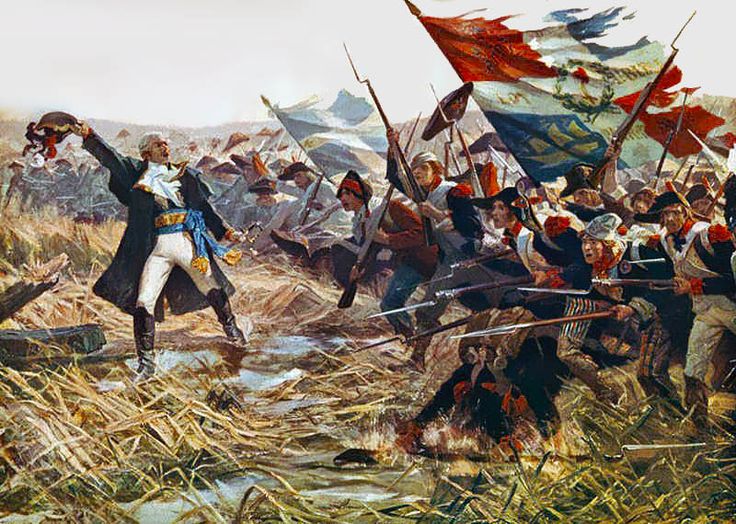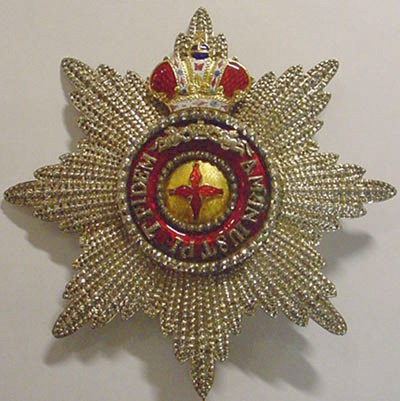|
Johann Nepomuk, Count Nostitz-Rieneck
Johann Nepomuk von Nostitz-Rieneck (24 March 1768 – 22 October 1840) commanded a cavalry division in the army of the Austrian Empire during the Napoleonic Wars. Career Johann Nepomuk was born on 24 March 1768 in Prague, the ninth child of Count Franz Anton von Nostitz-Rieneck (1725-1794) and Countess Marie Alžběta Krakovská z Kolowrat (1728-1815). His father was the High Burggraf of Bohemia. His father's younger brother was Friedrich Moritz von Nostitz-Rieneck, a high-ranking Austrian general who became president of the Aulic Council shortly before his death in 1796. In 1784, he entered the Habsburg monarchy's military establishment and fought in the Austro-Turkish War. He served with distinction in the Flanders Campaign and was wounded at Tourcoing in 1794. He retired from the army at the end of 1796, but returned to military service as a general officer in late 1800. In 1805, he led a brigade at Dürrenstein, Schöngrabern, and Austerlitz. In 1809, he fought at Asper ... [...More Info...] [...Related Items...] OR: [Wikipedia] [Google] [Baidu] |
Prague
Prague ( ; cs, Praha ; german: Prag, ; la, Praga) is the capital and largest city in the Czech Republic, and the historical capital of Bohemia. On the Vltava river, Prague is home to about 1.3 million people. The city has a temperate oceanic climate, with relatively warm summers and chilly winters. Prague is a political, cultural, and economic hub of central Europe, with a rich history and Romanesque, Gothic, Renaissance and Baroque architectures. It was the capital of the Kingdom of Bohemia and residence of several Holy Roman Emperors, most notably Charles IV (r. 1346–1378). It was an important city to the Habsburg monarchy and Austro-Hungarian Empire. The city played major roles in the Bohemian and the Protestant Reformations, the Thirty Years' War and in 20th-century history as the capital of Czechoslovakia between the World Wars and the post-war Communist era. Prague is home to a number of well-known cultural attractions, many of which survived the ... [...More Info...] [...Related Items...] OR: [Wikipedia] [Google] [Baidu] |
Battle Of Arcis-sur-Aube
The Battle of Arcis-sur-Aube (20–21 March 1814) saw an Imperial French army under Napoleon face a much larger Allied army led by Karl Philipp, Prince of Schwarzenberg during the War of the Sixth Coalition. On the second day of fighting, Emperor Napoleon suddenly realized he was massively outnumbered, and immediately ordered a masked retreat. By the time the Austrian Field Marshal Schwarzenberg realized Napoleon was retreating, most of the French had already disengaged and the Allied pursuit afterwards failed to prevent the remaining French army from safely withdrawing to the north. This was Napoleon's penultimate battle before his abdication and exile to Elba, the last being the Battle of Saint-Dizier. While Napoleon fought against Prussian Field Marshal Gebhard Leberecht von Blücher's Russo-Prussian army to the north, Schwarzenberg's army pushed Marshal Jacques MacDonald's army back toward Paris. After his victory at Reims, Napoleon moved south to threaten Schwarzenb ... [...More Info...] [...Related Items...] OR: [Wikipedia] [Google] [Baidu] |
Flanders Campaign
The Flanders Campaign (or Campaign in the Low Countries) was conducted from 20 April 1792 to 7 June 1795 during the first years of the War of the First Coalition. A coalition of states representing the Ancien Régime in Western Europe – Austria (including the Southern Netherlands), Prussia, Great Britain, the Dutch Republic (the Northern Netherlands), Hanover and Hesse-Kassel – mobilised military forces along all the French frontiers, with the intention to invade Revolutionary France and end the French First Republic. The radicalised French revolutionaries, who broke the Catholic Church's power (1790), abolished the monarchy (1792) and even executed the deposed king Louis XVI of France (1793), vied to spread the Revolution beyond France's borders, by violent means if necessary. A quick French success in the Battle of Jemappes in November 1792 was followed by a major Coalition victory at Neerwinden in March 1793. After this initial stage, the largest of these forces ass ... [...More Info...] [...Related Items...] OR: [Wikipedia] [Google] [Baidu] |
Aulic Council
The Aulic Council ( la, Consilium Aulicum, german: Reichshofrat, literally meaning Court Council of the Empire) was one of the two supreme courts of the Holy Roman Empire, the other being the Imperial Chamber Court. It had not only concurrent jurisdiction with the latter court, but in many cases exclusive jurisdiction, in all feudal processes, and in criminal affairs, over the immediate feudatories of the Emperor and in affairs which concerned the Imperial Government. The seat of the Aulic Council was at the Hofburg residence of the Habsburg emperors in Vienna. History The Aulic Council (from the Latin ''aula'', court in feudal language, in antiquity a Hellenistic type of grand residence, usually private) was originally an executive-judicial council for the Empire. Originating during the Late Middle Ages as a paid Council of the Emperor, it was organized in its later form by the German king Maximilian I by decree of 13 December 1497. It was meant as a rival to the separate Imperia ... [...More Info...] [...Related Items...] OR: [Wikipedia] [Google] [Baidu] |
Friedrich Moritz Von Nostitz-Rieneck
Friedrich Moritz, Graf von Nostitz-Rieneck (1728 – 19 November 1796, in Vienna), was a field marshal in imperial service to the House of Habsburg. His nephew, Johann Nepomuk von Nostitz-Rieneck, was a general officer in Habsburg service during the Napoleonic Wars. He was a member of the noble Nostitz family. Career He joined the service, probably during Austria's wars with Prussia in the 1740s, and was promoted to Colonel in 1759, during the Seven Years' War. On 19 February 1766, he was promoted again, to General-major, and on 19 January 1771, he was promoted to Feldmarschall-Leutnant, effective 25 February 1767. On 28 March 1785, he was promoted to General der Kavallerie, and on 15 May 1796, to Field Marshal. He was Captain of the Trabanten Life Guard and the Hofburg Watch, both honorary positions from April 1785 until May 1796. He was also president of the Aulic Council, the Imperial cabinet advising the Holy Roman Emperor on military matters. He held this pos ... [...More Info...] [...Related Items...] OR: [Wikipedia] [Google] [Baidu] |
Bohemia
Bohemia ( ; cs, Čechy ; ; hsb, Čěska; szl, Czechy) is the westernmost and largest historical region of the Czech Republic. Bohemia can also refer to a wider area consisting of the historical Lands of the Bohemian Crown ruled by the Bohemian kings, including Moravia and Czech Silesia, in which case the smaller region is referred to as Bohemia proper as a means of distinction. Bohemia was a duchy of Great Moravia, later an independent principality, a kingdom in the Holy Roman Empire, and subsequently a part of the Habsburg monarchy and the Austrian Empire. After World War I and the establishment of an independent Czechoslovak state, the whole of Bohemia became a part of Czechoslovakia, defying claims of the German-speaking inhabitants that regions with German-speaking majority should be included in the Republic of German-Austria. Between 1938 and 1945, these border regions were joined to Nazi Germany as the Sudetenland. The remainder of Czech territory became the Second ... [...More Info...] [...Related Items...] OR: [Wikipedia] [Google] [Baidu] |
House Of Kolowrat
The House of Kolowrat is a Czech Noble families, noble familyHouse of Kolowrat history kolowrat.cz/en. Citation: "[The] first historically documented Kolowrat, recognised by historians as the founder of the family, is Albrecht of Kolowrat the Elder († 1391). [...] He married three times and fathered eight children, six of them sons, laying the foundations of one of the most ramified among Czech aristocratic families." that had a prominent role in the history and administration of their native Kingdom of Bohemia as well as the Holy Roman Empire and later the Habsburg monarchy as high-ranking officials and supporters of the Czech National Revival. The family origins are so far back in time that they are not recorded in any extant Bohemian historical documents. Only a few ... [...More Info...] [...Related Items...] OR: [Wikipedia] [Google] [Baidu] |
Nostitz (family)
The House of Nostitz is the name of an old and important Silesian aristocratic family, whose members occupied many important positions within Holy Roman Empire and later in Austria, Bohemia and Germany. History The family was named after Nostitz in Saxony, with its history dating back to 1280 in Oberlausitz, today's Germany. They reigned over the Imperial County of Rieneck from 1673 when it was purchased by Count Johann Hartwig of Nostitz-Rieneck (1610-1683) until 1803 when they sold it to the Princes of Colloredo-Mansfeld. Apart from Nostitz-Rieneck several other branches of the family existed: ''Nostitz-Unwürde'', ''Nostitz-Jänkendorf'', ''Nostitz-Wallwitz'', ''Nostitz-Drzewiecky'', ''Nostitz-Rokitnitz'' and ''Nostitz-Ransen'' which lived and spread through Prussia, Austria, Bohemia, Poland and Russia. Notable members * (1725–1794), Bohemian nobleman and patron * Friedrich Moritz, Graf von Nostitz-Rieneck (1728–1796), a field marshal in imperial servic ... [...More Info...] [...Related Items...] OR: [Wikipedia] [Google] [Baidu] |
Chevau-léger
The Chevau-légers (from French ''cheval''—horse—and ''léger''—light) was a generic French name for several units of light and medium cavalry. Their history began in the late 15th and early 16th centuries, when the heavy cavalry forces of the French ''Compagnies d'Ordonnance'' were undergoing a massive structural reorganization. Initially, the companies combined the ''gendarmes'' (fully armoured men-at-arms) along with lighter ''coutiliers'' and "archers" in the same mounted formation, with the better armoured men forming the foremost ranks. However, as time passed the lighter horsemen were increasingly separated into independent formations of "medium" cavalry, bearing lighter armour and much shorter lances than the ''gendarmes''. These lighter formations eventually gained the name of ''chevau légers''. A similar development also happened in the organization of the Austrian and Spanish cavalry with the growth of ''caballería ligera'' formations. Their original similarit ... [...More Info...] [...Related Items...] OR: [Wikipedia] [Google] [Baidu] |
Proprietor (Inhaber)
A Proprietor, or Inhaber, was a term used in the Habsburg military to denote special honors extended to a noble or aristocrat. The Habsburg army was organized on principles developed for the feudal armies in which regiments were raised by a wealthy noble, called the ''Inhaber'' (proprietor) who also acted as honorary colonel. Originally, he raised the regiment, funded its needs, and received a portion of its revenue, which might be plunder or loot. He also shared in its shame or its honors. The Prussian and Imperial Russian military adopted a similar system. Practical application When the ''Inhaber'' was a famous or royal person, a second colonel was chosen from among the nobility to perform his duties. For example, on 16 September 1789, Friedrich Joseph, Count of Nauendorf, led a successful raid on the island of Borecs in the Danube, which garnered massive amounts of supplies from the Turkish forces. On 9 November of that year, he led four squadrons of his regiment to ... [...More Info...] [...Related Items...] OR: [Wikipedia] [Google] [Baidu] |
Order Of St Anna
The Imperial Order of Saint Anna (russian: Орден Святой Анны; also "Order of Saint Anne" or "Order of Saint Ann") was a Holstein ducal and then Russian imperial order of chivalry. It was established by Karl Friedrich, Duke of Holstein-Gottorp, on 14 February 1735, in honour of his wife Anna Petrovna, daughter of Peter the Great of Russia. Originally, the Order of Saint Anna was a dynastic order of knighthood; but between 1797 and 1917 it had dual status as a dynastic order and as a state order. The Order of St. Anna continued to be awarded after the revolution by Grand Duke Kirill Vladimirovich, Grand Duke Vladimir Kirillovich, and Grand Duchess Maria Vladimirovna. Today, the Russian Imperial Order of St. Anna, awarded by Grand Duchess Maria Vladimirovna is recognized as an order of chivalry by the privately operated ICOC as a continuation of the pre-Revolutionary order, and has been approved for wear with military uniform by the Russian Federation, but not by some ... [...More Info...] [...Related Items...] OR: [Wikipedia] [Google] [Baidu] |





